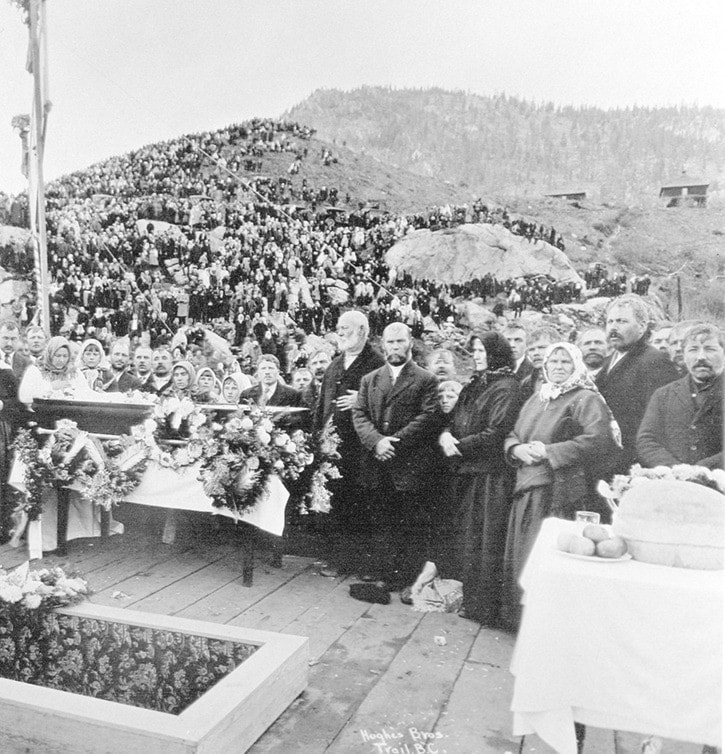With lots of snow and good temperatures in the valley, I have taken to skiing again on the terraces known locally as Indian Flats.
Two days before the year ended I set a couple of loop trails, and connected once again to the joys of breaking trail through excellent snow that had only been disturbed by resident wildlife. Several passages over the loops produced a polished trail that was just as good as a machine-groomed track, without the loss of all the stories that had been written in the snow.
It was a sunny day and remarkably warm, to the point where the grip with my purple wax was starting to be compromised on the steeper grades. To get by I sought out the places where the low winter sun had not yet drilled into the snow. All I had to do was to set my track in spots where the morning shadows still lingered.
And so I started chasing shadows. But it soon occurred to me that I was also chasing tenuous glimpses of past lives — shadows, as Dickens called them, for his Spirits to project at a trembling Scrooge. Shadows of human lives spent in what must have been an idyllic setting. Visions of Sion (Zion) Village started to gel in my mind.
The first I had heard of it was from my neighbour, the late John Makaroff, who spent his childhood there. As in most of the Doukhobor villages, it was a rugged life, lived close to the land. Water must have been a problem in that arid setting with such a rocky backdrop. Yet the village was special: it was built on the highest Brilliant terrace and overlooked the rocky setting that had been selected by Peter Lordly Verigin for his retreat house, and after 1924, it overlooked his tomb.
The village consisted of two communal dwellings (doms), which accommodated the following families: Chernoff, Makortoff, Pereversoff, Postnikoff, Relkoff, Savinkoff, Semenoff, Shkuratoff, and Verigin. I am not sure why the name Makaroff is not listed. Later, the Makaroff family moved to the village of Makarovka, located above the CPR tracks on Sherbiko Hill.
After achieving amazing results, the Doukhobor community changed drastically after the death of Peter Lordly Verigin in a train explosion on Oct. 29, 1924. The management board of the Christian Communities of Universal Brotherhood took on a sizeable loan to consolidate accounts, and the CCUB indebtedness was further increased under Peter Lordly’s son, Peter Chistiakoff. During the same period the community lost productive members, who set up agricultural and business enterprises of their own.
Concurrently, the Sons of Freedom faction was gaining adherents, with increasing hostility towards the CCUB leadership. By the time the CCUB declared bankruptcy in 1937, the burden of supporting the communal enterprise had fallen on fewer than half of the original membership of roughly 8,000.
Other factors that contributed to the decline were inherent at the very beginning. Of all the arable soil in the Doukhobor holdings only three per cent is considered as very good, and only 15 per cent is good to fair. The soils in the Ootischenia-Brilliant area fit this general pattern.
Water-holding ability of the soils is another consideration: it is poor for most of the Doukhobor lands and agriculture could be supported only through extensive irrigation. Impressive systems from Pass and McPhee creeks were constructed, but this work was done largely in the absence of professional advice and various problems followed.
Sion Village was located too high to take advantage of these larger communal systems, and thus had to rely exclusively on water drainage off the steep face of Sentinel Mountain, which may have been sufficient for domestic use, but could not have supported irrigation.
The provincial government paid off the debtors and acquired the former CCUB lands for a fraction of their value. The site occupied by Sion Village and its orchards was turned over to Cominco and dug up to extract concrete aggregate for the Brilliant Dam.
I returned to my trails on the following day, the last day of the year.
It had turned a lot colder and I had to readjust my wax.
The trails, however, were still in pristine shape, and with the colder snow, my grip was better than ever. The only novelty was that elk had adopted some trail segments for easier walking.
I didn’t really mind, as they paid me back with stories they had left in the snow: where they were travelling, what they were feeding on, and where they had bedded down for the night. More shadows in the snow.
With thanks to John Makaroff, Jonathan J. Kalmakoff, and Albert L. Van Ryswyk.
Walter Volovsek’s website can be found at trailsintime.org
Previous installments in this series
Macao to Capilano: A Life Journey, Part 5
Macao to Capilano: A Life Journey, Part 4
Macao to Capilano: A Life Journey, Part 3
Macao to Capilano: A Life Journey, Part 2
Macao to Capilano: A Life Journey, Part 1
The Old Glory weather observatory
David Thompson: Mapping our region
Reappraising the Franklin Expedition
Connecting with Albert McCleary
Lilette Mahon: A mentor’s gift
Edward Mahon: Searching for a legacy
Edward Mahon: A stimulating childhood
Intrigues: Castlegar’s lacklustre childhood
Perceptions: Adrift on the River of Life
